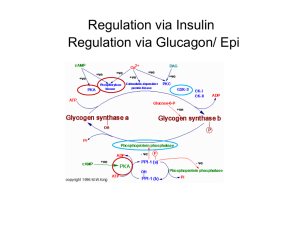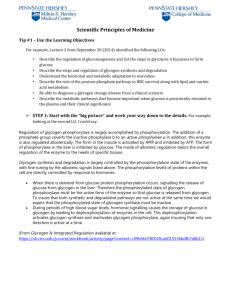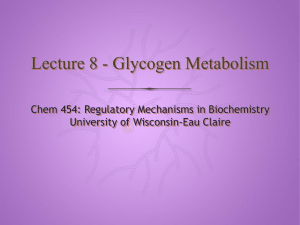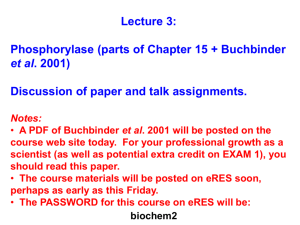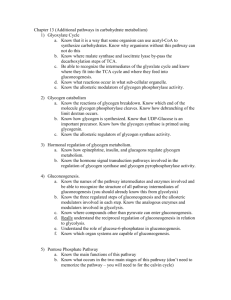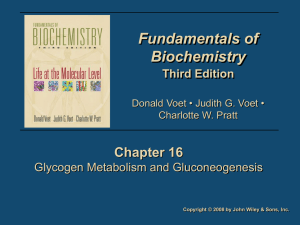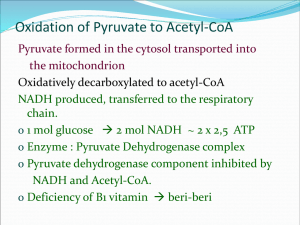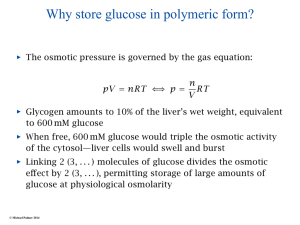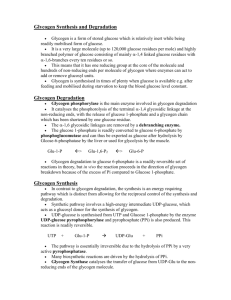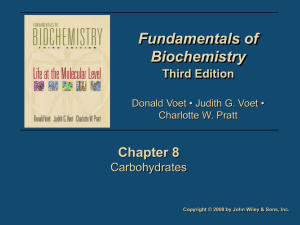lect9
advertisement
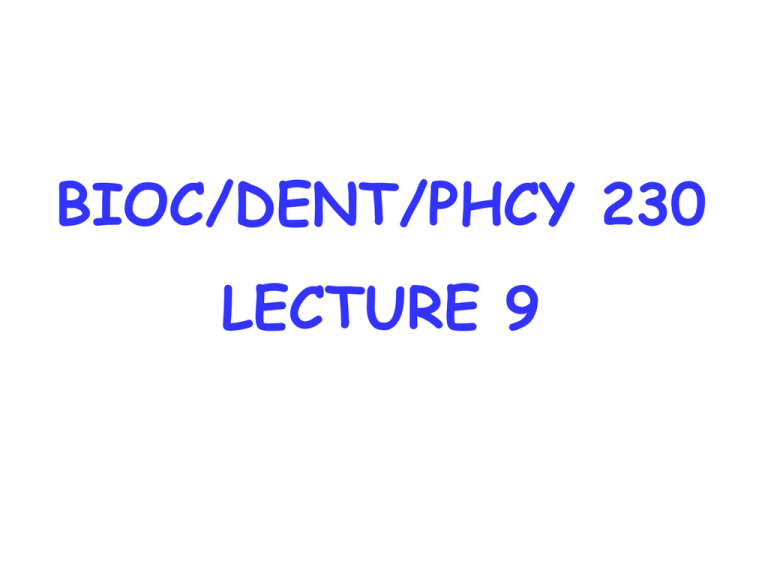
BIOC/DENT/PHCY 230 LECTURE 9 Carbohydrate metabolism in the fasted state the body needs to ensure there is a constant supply of glucose for tissues like the brain this can be achieved by mobilising body stores of glucose (glycogenolysis) or synthesising glucose de novo (gluconeogenesis) the stimulation for the mobilisation and/or synthesis of glucose can come from a number of sources glucagon, adrenaline and cortisol can all increase the mobilisation of glucose Glycogen mobilisation the two main stores of glycogen are muscle and liver muscle glycogen is for local use liver glycogen helps maintain plasma glucose levels the branched nature of glycogen allows for the rapid mobilisation of glucose from these stores under the appropriate conditions What are the chemical requirements for glycogen mobilisation? glycogen contains two types of bond: a-1,4 and a-1,6 glycosidic bonds Glycogenolysis requires three different enzyme activities 1) an a-1,4 glucosidase activity 2) an a-1,6 glucosidase activity 3) an a-1,4 a-1,4 glucantransferase activity Glycogen phosphorylase catalyses the cleavage of the a-1,4 glycosidic bonds non-reducing end glucose-1-phosphate Glycogen phosphorylase can not digest all of the glucose units in a branch GP can only cleave down to 4 or 5 residues from a branch point to allow the process to continue a “debranching enzyme” is required this enzyme has both a-1,6 glucosidase activity and a-1,4 a-1,4 glucantransferase activity Glucose-1-phosphate must be converted to glucose-6-phosphate before it can enter glycolysis catalysed by phosphoglucomutase Regulation of glycogenolysis glycogen phophorylase can be regulated both by covalent modification and allosteric interactions glycogen phosphorylase is found in two “active forms” phosphorylase a is relatively active phosphorylase b is relatively inactive (but still active none the less) AMP Glucagon stimulates glycogen phosphorylase via a receptor mediated signalling pathway A closer look at the activation of adenylate cyclase phosphodiesterase phosphatase Co-ordinate regulation of glycogenolysis and glycogen synthesis both glycogenolysis and glycogen synthesis occur in the cytosol both pathways have G-6-P and G-1-P as intermediates need some mechanism to only have one pathway active at any one time Those signals which activate glycogen phosphorylase inhibit glycogen synthase
